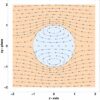An analysis of scholarly research papers published in the last 50 years provides new insights into trends in research productivity, highlighting an overall increase in productivity and a worldwide gender gap. Milad Haghani of the University of New South Wales in Sydney, Australia, and colleagues present these findings in the open-access journal PLOS ONE on August 10, 2022.
Tracking trends in research productivity can help inform many endeavors, such as allocating research funding, making hiring decisions, and maximizing the impact of research.
To build an updated picture of productivity trends, Haghani and colleagues conducted a deep-dive search of scholarly publications using the Web of Science platform. They ultimately analyzed information on 75 million scholarly articles published worldwide between 1970 and 2020. In line with prior evaluations, they used the number of scholarly publications as a measure of research productivity.
This analysis illuminated several trends. Between 2010 to 2020, the yearly number of publications generally increased every year, with the fastest-growing fields being environmental sciences and environmental engineering. However, the overall number of publications dropped in 2020, potentially reflecting the impact of the COVID-19 pandemic; computer science, engineering, and social science had the most notable 2020 declines.
The analysis also highlighted a persistent worldwide gap in the overall number of publications involving at least one female author versus at least one male author, which does not appear to be closing for any country and is widening in some—particularly in Middle Eastern countries. However, the ratio of female-to-male productivity does appear to be narrowing, albeit at very different rates for different countries.
The analysis did not find any significant gender difference in the overall decline in productivity associated with the COVID-19 pandemic. However, in certain countries—including the Netherlands, the U.S., and Germany—the pandemic was associated with a greater decline in male versus female productivity.
The authors note that the long-term impact of the pandemic remains to be determined. They also outline potential directions for future evaluations to further deepen understanding of research productivity trends, such as evaluating gender gaps in specific fields and the impact of country-specific lockdown measures.
The authors add: “The problem of gender gap in scholarly publications, as an indicator of gender representation in academia, is vastly different across the world. In many countries, it is not on its way to closing, and in many others, the trends indicate that the gap will not close even a century from now, unless interventions are introduced.”
More information:
Trends of research productivity across author gender and research fields: A multidisciplinary and multi-country observational study, PLoS ONE (2022). DOI: 10.1371/journal.pone.0271998
Provided by
Public Library of Science
Citation:
50 years of research productivity trends across fields and genders (2022, August 10)



